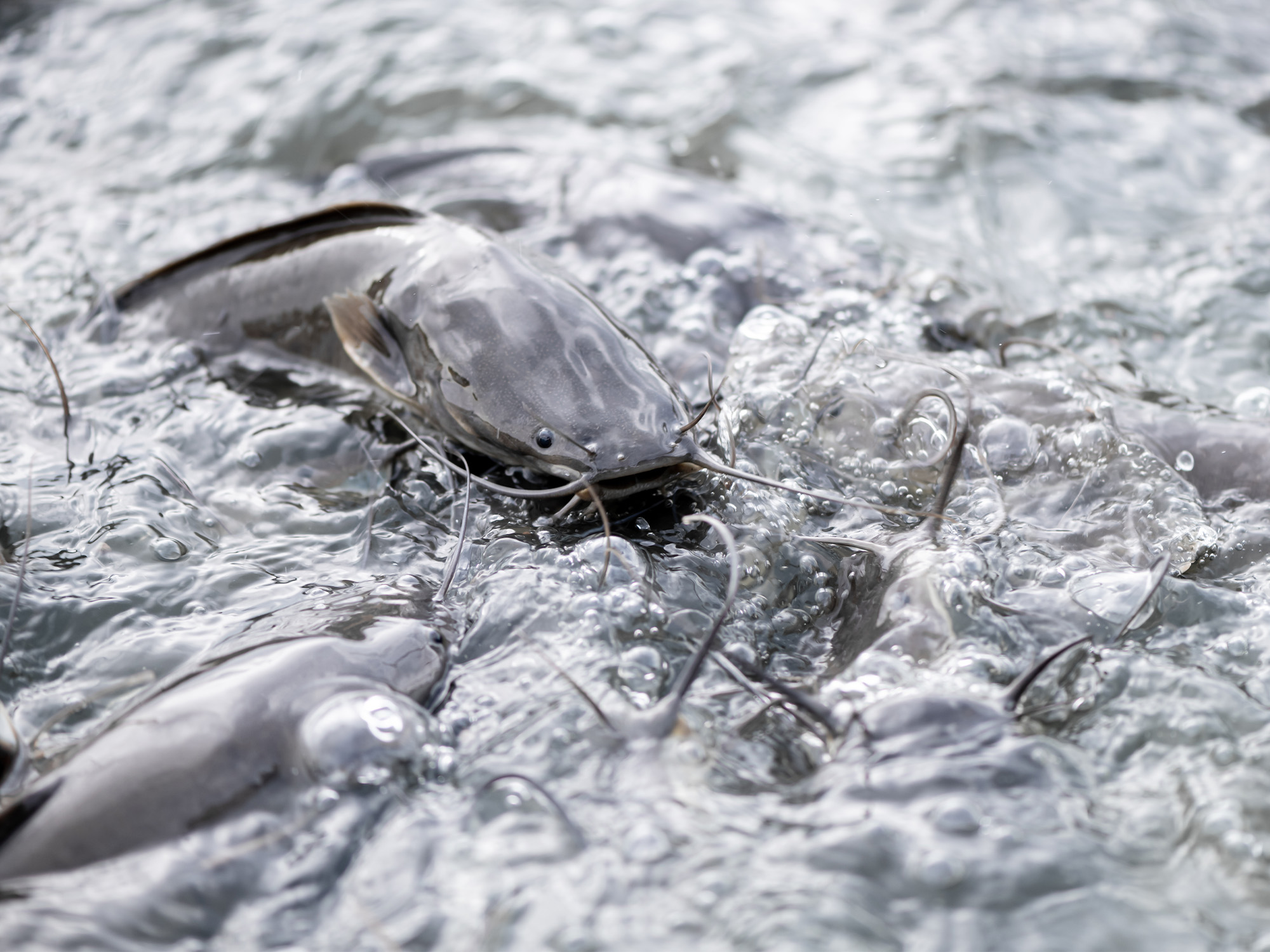
By Alaina Dismukes
As a part of the Feed the Future Innovation Lab for Fish, a team of researchers from WorldFish, the University of Ibadan, and Mississippi State University conducted a fish epidemiological and health economic survey on catfish and tilapia farms, using the online epidemiology and health economics tool developed jointly by WorldFish and the Norwegian Veterinary Institute. The survey is one component of the project on improving biosecurity in aquaculture in Ogun and Delta States, Nigeria.
The aquaculture surveys—which were conducted from June 17 to July 16, 2021—focused on collecting data on several topics, including baseline and abnormal mortality events, treatments for diseased fish, and the rate of mortality.
The survey results contribute to the project’s broader goals of improving livelihoods, nutrition, and food security for fish farmers and consumers in Nigeria through better designed biosecurity strategies at farmer, community, and state levels. Moreover, the survey will help develop better management practices to reduce risks of disease outbreaks through improved diagnostic solutions.
“Our survey results from our regional model in Ogun and Delta States will contribute to better understand and optimize current farming practices,” said Mohan Chadag, the lead principal investigator of the project. “Additionally, it will help reduce risk of disease introduction and spread, and it will reduce disease-related losses throughout the industry.
“In Delta State, we visited 147 farms and collected 37 biological samples. While in Ogun State, we visited 252 farms and collected 78 biological samples.”
Water and fish samples, such as blood and tissue specimens, were taken to look at a variety of factors that could affect the health of the fish and cause disease.
“The survey implementation did not come without some challenges,” Chadag said. “For instance, COVID-19 delayed the start of our survey process. Also, drought caused a delay in stocking fish and farm preparation, affecting planned survey visits and our sampling schedule.”
Additionally, once the surveys began, a heavy period of flooding resulted in fish losses for one of the farm clusters in Ogun State.
“From a quick calculation, we had 399 survey submissions,” said Laura Khor, project collaborator. “All of the surveyed fish farms reared catfish; only 11 of these farms also reared tilapia.”
The farmers told the team they were hesitant to culture tilapia as they previously suffered major losses in tilapia production.
“Since they did not know how to separate tilapia according to sexes, mixed sex culture led to rapid reproduction and overcrowding in production systems,” said Olusola Bodunde, the project manager. “This caused depletion of oxygen and subsequently mass mortality of tilapia. Based on the farmers’ observation that catfish managed to survive low-oxygen conditions better, they decided to switch to catfish for the majority of their production.”
According to the team, a way to overcome the problem of low-oxygen conditions may be to have target water quality management through providing emergency support equipment for improving pond oxygenation on the farm. That way, the pond will be suitable for the culture of tilapia.
“Alternatively, farmers are willing to continue with tilapia culture if they could obtain more resilient tilapia fingerlings,” Khor said.
The majority of the surveyed farms were commercial ponds (374 farms, 93.7%) while four farms (one percent) were hatcheries. Only 12 (three percent) of the respondents had homestead ponds.
“These results were not surprising since there were previous efforts by the Nigerian government to develop the country’s aquatic food system by establishing fish farm clusters nationwide as well as persuading fish importers to venture into commercial aquaculture,” Khor said.
Fifty percent of all surveyed farms did not have any female owners or workers, and the majority of the remaining farms generally hired one to three female workers, either full time or part time.
Out of 84 female respondents, 67 (79.7%) were owners, and nine (10.7%) were managers. Sixty-three (75%) of these female respondents worked full-time at a farm. In comparison, there were 315 male respondents. Two hundred and seventy-seven (87.9%) of the male respondents were owners, and 28 (six percent) were hired as managers. Two hundred and sixty-two (83.1%) of the male respondents worked full-time at the farm.
“When it came to the age of female and male respondents, the 30 years and below age group was almost equal, 10 women and 11 men,” Khor said. “However, the majority of respondents were from the 30-49 years age bracket, 51 women and 226 men.”
For age 60 years and above, there was almost five times the number of male respondents (24) versus female respondents (five), and for age 50-59 years, there was three times the number of male respondents (54) compared to females (18).
The next step for the project includes analyzing the farm survey data using specialized statistical and epidemiological tools to identify risk factors and design risk reduction interventions in the form of better management practices. In addition, biological samples collected will be subjected to various laboratory analyses to describe the disease process and understand the etiology.
“Our findings will help to develop science-based policies and inform development of a national aquatic animal health strategy for the long-term development of catfish and tilapia aquaculture in Nigeria beyond the three years of this project,” Chadag said.
“Improved aquaculture production would have significant positive impacts on the food security and livelihoods of fish farmers and consumers in Nigeria.”
Published October 22, 2021

